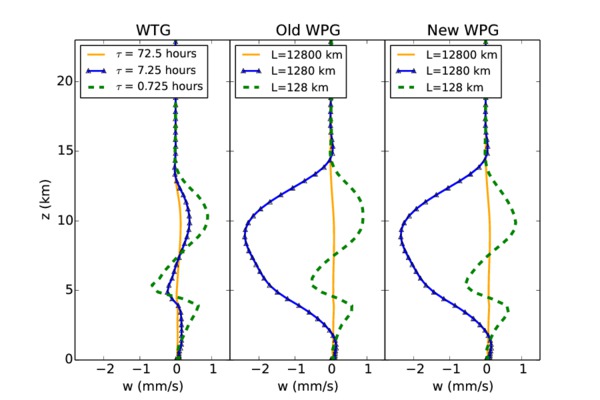Edman and Romps, Self-consistency tests of large-scale-dynamics parameterizations for single-column modeling, JAMES, 2015
Paper
Description
Sometimes, an experiment gives an answer that departs significantly from what is expected. Those unexpected results point in the direction of new physics, i.e., new processes that are not yet accounted for in the theories. This paper reports on one such unexpected result.
As a scientific community, we think we understand how a patch of convecting atmosphere communicates with the rest of the atmosphere: it is all about gravity waves. So, if we disconnect a patch of convecting atmosphere from its surroundings, but model its interactions with the surroundings using a model of those gravity waves, then the patch of convecting atmosphere should behave the same. This is what we refer to here as a "self-consistency test". In a particular limit (small domain size L, or small timescale tau), the self-consistency tests should be passed with ease. But, this is not what happens (see the dashed green curves in the figure below, and the associated caption). New physics awaits.
Self-consistency tests of the WTG, old WPG, and new WPG schemes in a cloud-resolving model. The original patch of convecting atmosphere is in radiative-convective equilibrium with no mean ascent. To pass the self-consistency test, the isolated patch of atmosphere must have a zero profile of mean ascent (or, at least, small compared to the mean speed of clear-sky radiatively driven descent). With peak values of about 1 mm/s for small tau and L in both WTG and WPG, the self-consistency test is failed.
